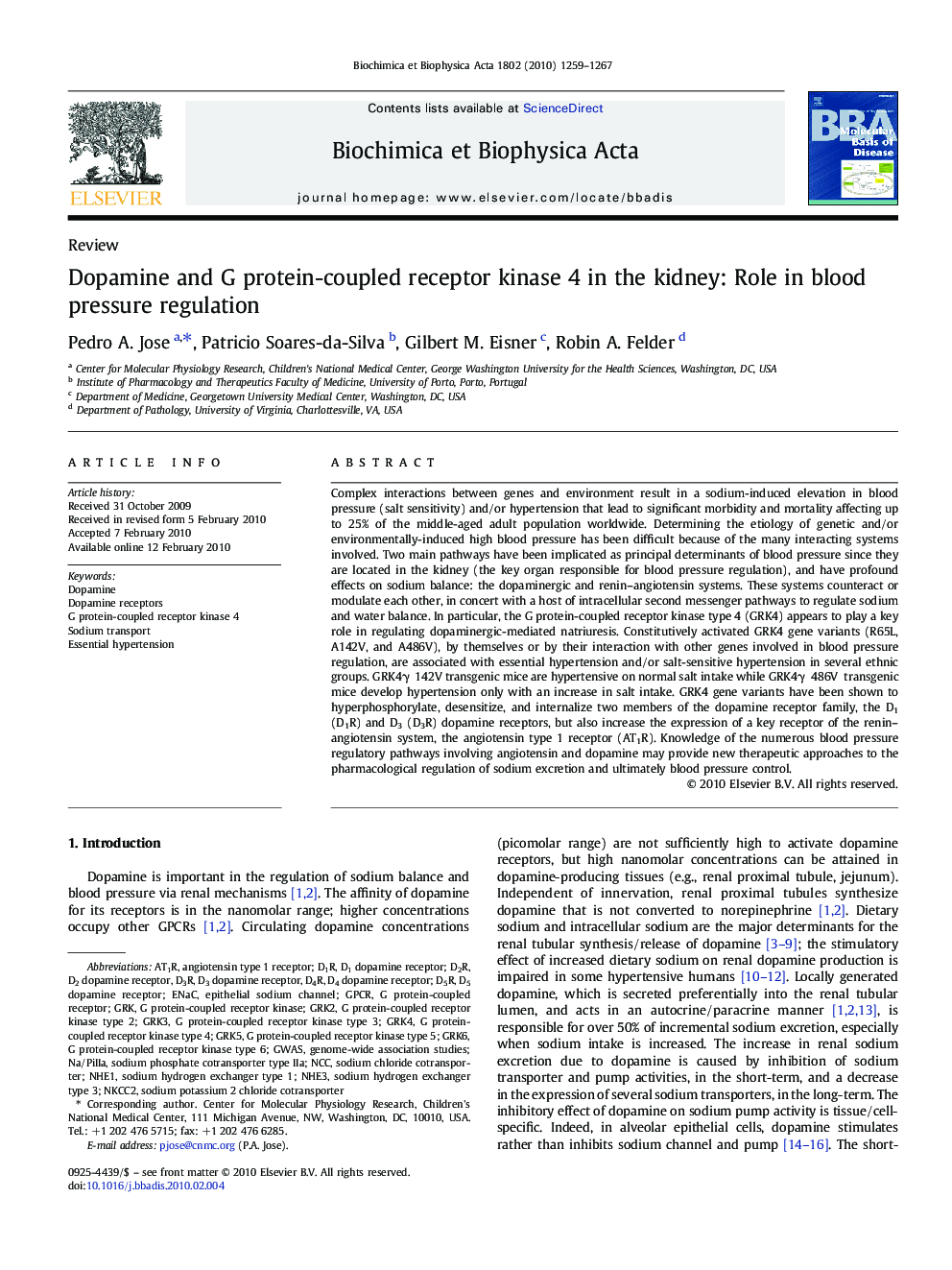| کد مقاله | کد نشریه | سال انتشار | مقاله انگلیسی | نسخه تمام متن |
|---|---|---|---|---|
| 1905245 | 1534701 | 2010 | 9 صفحه PDF | دانلود رایگان |

Complex interactions between genes and environment result in a sodium-induced elevation in blood pressure (salt sensitivity) and/or hypertension that lead to significant morbidity and mortality affecting up to 25% of the middle-aged adult population worldwide. Determining the etiology of genetic and/or environmentally-induced high blood pressure has been difficult because of the many interacting systems involved. Two main pathways have been implicated as principal determinants of blood pressure since they are located in the kidney (the key organ responsible for blood pressure regulation), and have profound effects on sodium balance: the dopaminergic and renin–angiotensin systems. These systems counteract or modulate each other, in concert with a host of intracellular second messenger pathways to regulate sodium and water balance. In particular, the G protein-coupled receptor kinase type 4 (GRK4) appears to play a key role in regulating dopaminergic-mediated natriuresis. Constitutively activated GRK4 gene variants (R65L, A142V, and A486V), by themselves or by their interaction with other genes involved in blood pressure regulation, are associated with essential hypertension and/or salt-sensitive hypertension in several ethnic groups. GRK4γ 142Vtransgenic mice are hypertensive on normal salt intake while GRK4γ 486V transgenic mice develop hypertension only with an increase in salt intake. GRK4 gene variants have been shown to hyperphosphorylate, desensitize, and internalize two members of the dopamine receptor family, the D1 (D1R) and D3 (D3R) dopamine receptors, but also increase the expression of a key receptor of the renin–angiotensin system, the angiotensin type 1 receptor (AT1R). Knowledge of the numerous blood pressure regulatory pathways involving angiotensin and dopamine may provide new therapeutic approaches to the pharmacological regulation of sodium excretion and ultimately blood pressure control.
Journal: Biochimica et Biophysica Acta (BBA) - Molecular Basis of Disease - Volume 1802, Issue 12, December 2010, Pages 1259–1267